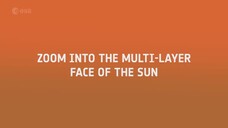The brain perceives the passage of time thanks to the same structure that controls the sense of touch, according to research conducted by a team coordinated by Professor Mathew Diamond at the International School for Advanced Studies (SISSA) in Trieste and published in Nature Communications. The researchers have in fact shown that the perception of time embodied within a tactile experience is rooted in the dual functionality of the brain region known as the somatosensory cortex.
The discovery can be attributed to research carried out on rats using optogenetics, a technique to control the activity of neurons or other cell types using light. In this way, the scientists established a connection between the perception of a stimulus and that of its duration, obtaining the first demonstration that the perception of time is rooted in a widespread network of brain areas with diverse functions, including touch.
"The neuronal mechanisms underlying the perception of the duration of sensory events are still not fully known," said Diamond. "It is believed that, rather than relying on a single dedicated brain center, the perception of time emanates from networks of neurons distributed across various brain regions," he continued.
"The study's findings demonstrate that the sensory processing stage of cortex is one component of the network. This means that one population of cortical neurons can give rise to two distinct sensory experiences, emphasizing the interconnected nature of time perception and touch," concluded Diamond.
Riproduzione riservata © Copyright ANSA













